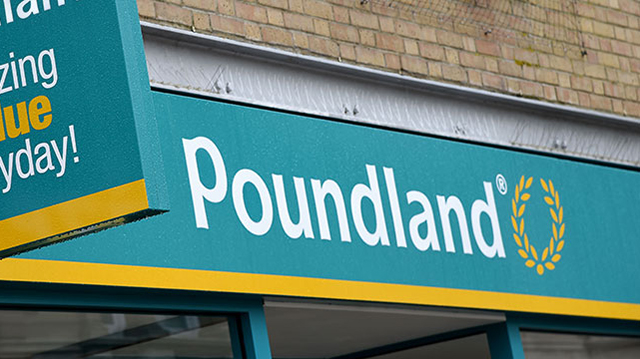The logistics industry is going through afeverish period of consolidation. Two continental giants, Deutsche Post’s DHL and Kuehne & Nagel, are negotiating to take over Exel and ACR Logistics. These alone represent nearly £4bn of acquisitions in the offing. But they are just the latest in a series of mergers and acquisitions that are shrinking the number of players in the market.
Logistics is a tight market with margins of around 2-4%, and companies need to increase their profits. That is not easy in a mature market where finding fresh customers is unrealistic. As a result, companies have moved in on other operators with clients in new sectors orregions, reaping not just more business but economies of scale in the process.
Deutsche Post has already announced that it expects cost savings of £150m by 2008. But does consolidation in the industry mean a rationalisation of property holdings?
Intuition says yes. It stands to reason that two companies with a number of distribution centres in close proximity to each other will seek to cut that number to save costs.
“The first thing merged companies do is to look and see if they have overlaps in property,” says Bert Angel, global services manager for southern Europe with developer ProLogis. “There often are, so rationalisation of portfolios takes place, selling property or merging facilities to create fewer, larger hubs.” A warehouse of 300,000 sq ft was big in the mid-1990s, but now 1m sq ft is found in many regions of the UK.
It is a compelling argument, but one that Andrew Stacey, director in the logistics department for Savills in France and Belgium, believes may take time to unfold, if at all. “A new owner coming in takes time to understand what they own and what they lease, how long contracts have to run and whether they can combine warehousing space,” he says. He adds that for 3PLs (third-party logistics providers), putting the goods of different customers in one shed does not always make sense. “You can’t put tyres and food in the same warehouse.”
Logistics operators
According to NAI Fuller Peiser’s supply chain consultant Lisa Fitch, the first surplus space produced by logistics company mergers will be in offices rather than warehousing. “These companies will look to rationalise duplicated accounting functions and head offices,” she says.
“From the distribution perspective, logistics companies are tied to some extent. You may find that a merged company has two distribution centres close together, but their clients are not going to want them to rationalise. They’ll be concerned about the disruption that moving stock would create, and will object unless there’s a huge cost saving to be gained.”
Andrew Gent, director with Gent Visick, a specialist industrial property surveyor in Leeds, agrees. He says logistics operators generally tie contracts with customers to property leases, where there is little likelihood of warehouse space being rationalised.
“Mergers and acquisitions have had little real impact upon demand for distribution premises because the majority of units are acquired for specific contracts,” he says. “Therefore, they are not overly sensitive to changes in ownership unless the customer has a get-out clause enabling them to retender.”
This tie could affect lease lengths. The property industry has generally accepted that contract-led requirements have brought shorter lease terms on distribution premises, to tie in with operators’ contracts. But Jones Lang LaSalle’s head of industrial agency, David Emburey, thinks that, where 3PL companies can serve several customers from one warehouse, this may lead to longer lease periods.
“Typically, in the 1990s, three-year contracts were the norm,” says Emburey. “Operators would run just one contract from a single building. Now, bigger 3PLs are taking bigger buildings and running multiple contracts out of them with leases getting longer, say 10 years. Buildings used to be smaller and location-specific. Now bigger sheds in strategic locations are serving many contracts, and operators have one lease liability instead of 10, bringing a big saving in costs.”
Property professionals will now have to deal with larger companies, but the long-term effects are unclear. Perhaps one thing is certain. DHL’s takeover of Exel will form a company with only around 10% of the European market, so there is a lot more consolidation to come.
|
Reforging relationships with a merged 3PL will be the first job for people in the property sector. NAI Fuller Peiser’s supply chain consultant Lisa Fitch says: “When two large firms merge, they will rationalise their suppliers, such as surveyors, and the difficulty that arises is forming a relationship with the new merged entity,” she says. But it is not all bad news. According to Bert Angel, global services manager for southern Europe with developer ProLogis, the bigger firms get, the larger their requirements. “Companies are getting so big that they put a lot more effort into developing their portfolio, and property is put at a higher level,” says Angel. “They usually want to work with a preferred partner because that way they get standardisation of buildings and contract terms.” |
|
Fourth-party logistics, or 4PL provider, was a term coined by Andersen Consulting in the 1990s. A 4PL provider is a virtual company that manages the planning and flow of information from customers to service providers. This enables each party to optimise transport and supply of goods without having to hand over sensitive information to a third-party provider. But the business model is still being formed, and disagreements about its definition remain. The model entails a customer outsourcing its entire supply chain including, crucially, its IT systems. This means a 4PL can manage everything from calls for stock, warehousing, and deliveries to production lines and retail outlets. A 4PL will know when and how much to move without the further intervention of its customer. But 3PLs are fighting back and providing more than simple transport and warehousing functions, such as reverse logistics, whereby surplus goods can be returned to the right location automatically. |
|
2002 Wincanton buys P&O Trans Europeanfor £152m 2002 Deutsche Post acquires DHL Worldwide Express for £2.9bn 2003 Deutsche Post buys Airborne Express for £1bn 2004 Exel buys Tibbett & Britten for £328m September 2005 DHL (Deutsche Post) announces the purchase of Exel for £3.7bn, creating a £67bn giant October 2005 Kuehne & Nagel buys ACR Logistics (formerly Hays Logistics) for £295m. It creates a company with pro forma revenues of £9.3bn in 2004 |










